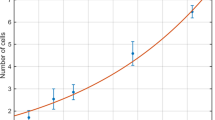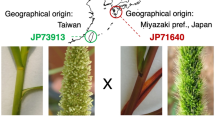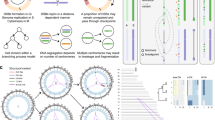Abstract
IN the present work I have determined the weakest, link in an insect life-cycle and related this to the quantitative differences between the sterility and lethality doses when virgin females were irradiated at various developmental stages. The wasp used is known in genetic literature as Habrobracon juglandis (Ashmead). The females were chosen since it was believed that a non-sterile female would normally live and copulate with a son and afterwards produce both males and females. Critical stages for exposure were selected at significant changes in somatic and/or gonadic differentiation.
This is a preview of subscription content, access via your institution
Access options
Subscribe to this journal
Receive 51 print issues and online access
$199.00 per year
only $3.90 per issue
Buy this article
- Purchase on SpringerLink
- Instant access to full article PDF
Prices may be subject to local taxes which are calculated during checkout
Similar content being viewed by others
References
Henschen, W., An. Morphol. Ökol. Tiere., 13, 144 (1928). Speicher, B. R., unpublished Master's thesis at Pittsburgh University (1931). Grosch, D. S., Growth, 12, 243 (1948); J. Elisha Mitchell Sci. Soc., 65, 61 (1949); 65, 205 (1949). Amy, R. L., Radiation Res., 3, 166 (1955).
Heidenthal, G., Genetics, 30, 197 (1945).
Grosch, D. S., J. Elisha Mitchell Sci. Soc., 65, 205 (1949).
Bacq, Z. M., and Alexander, P., “Fundamentals of Radiobiology” (Academic Press Inc., New York, 1955).
Author information
Authors and Affiliations
Rights and permissions
About this article
Cite this article
ERDMAN, H. Divergence between Lethal Doses and Sterilizing Doses of X-Rays with Progressive Development in Habrobracon Females. Nature 186, 254–255 (1960). https://doi.org/10.1038/186254b0
Issue date:
DOI: https://doi.org/10.1038/186254b0



